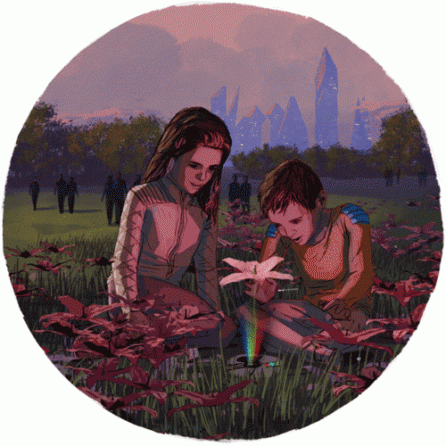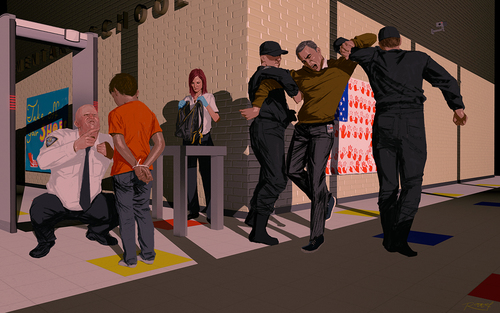I took a job for a year on Shemya, a small remote island at the end of the Aleutian chain 1,500 miles west of Anchorage, Alaska, an area familiar to some of you from the series Deadliest Catch. The job, cleaning and general maintenance, with its twelve hour days and seven day weeks, was ordinary enough for me, barely out of my teens. The place, its mission, and the people working there were not. The island supported several organizations: a Strategic Air Command base, an Army Security Agency field station, and the Air Force’s 16th Surveillance Squadron.
For years I attempted to write about my experiences there, before they melted into half-remembered ghosts of the past. I tried poems, nonfiction, and fiction, and could never find words to faithfully capture what was such a singularly odd time. For example, the following short poem is factual, but it doesn’t contain a sense of the vast pull on a person’s spirit and emotions that such a remote place can bring:
Summer is short there.
The sun is stingy in its triangular path,
and the sea is hard blue. Bursts
of dandelions and purple
blossomed flowers force
up from the earth.
Minutes pass; the horizontal
rains come, then gales and
tremors. Rain turns to snow
and the sea is leaden gray
on its way to winter.
Other attempts to recreate the place and its power ended up like the poem, a simple statement of fact, as odd as the facts were. The extreme strangeness and the lack of reference points, collapsed my attempts to represent the island and its deeper affect on me and the people around me.
Then one day this past summer a news story about the Aleutians had me thinking again of the remoteness, the forces of ocean and earth, the searching through the skies for any possible activity, the manic camaraderie of the men, but this time I realized I could only capture my time there if I abandoned thinking in terms of conventional narrative.
 Nearly every memory I had of the island was both fictional and real at the same time. For awhile I struggled with what to call this genre, but my wife reminded me that if any part of it was untrue, it was fiction. That decided, a larger issue faced me. How could I give my recollections shape and form, including our kind of manic leisure time activities, while at the same time faithfully representing how decentered, formless, and even frightening the island could be?
Nearly every memory I had of the island was both fictional and real at the same time. For awhile I struggled with what to call this genre, but my wife reminded me that if any part of it was untrue, it was fiction. That decided, a larger issue faced me. How could I give my recollections shape and form, including our kind of manic leisure time activities, while at the same time faithfully representing how decentered, formless, and even frightening the island could be?
The only way to do this was to explode the sense of narrative, to remove that sense of drive. Sally Greene, in a blog entry on Greene Space (http://sallygreene.org), uses the term “essayistic flights of fancy” to describe a technique of Virginia Woolf: the interruption of the narrative with side journeys into abstractions, essayistic flights away from the main story, that then return right to the place they left, and, as a result, break down the traditional linear order of narrative. What would happen, I wondered, if the “flights of fancy” became the organizing principle of the piece? What if the abstractions never returned? What if they existed side by side with no connection to the chronological events of daily life? All sense of the pulse of narrative, circular, linear, or otherwise, would be removed. In terms of the shape of a story, nothing would be happening while everything would be happening. No hierarchy of oddness would exist and no possibility of resolution, just a gathering of men looking up toward space, wondering. With this in mind, I began writing the story titled “Nothing Is Always the Same.” The story will appear in a future issue of the North American Review.
Brian Fitch lives and works in Western Wisconsin with his wife Jenny.
Illustrator Clay Rodery lives in Brooklyn, New York. Clay has been featured many times on our blog and he is featured in NAR issues, 298.4. 299.1, and 299.3, Summer 2014.



